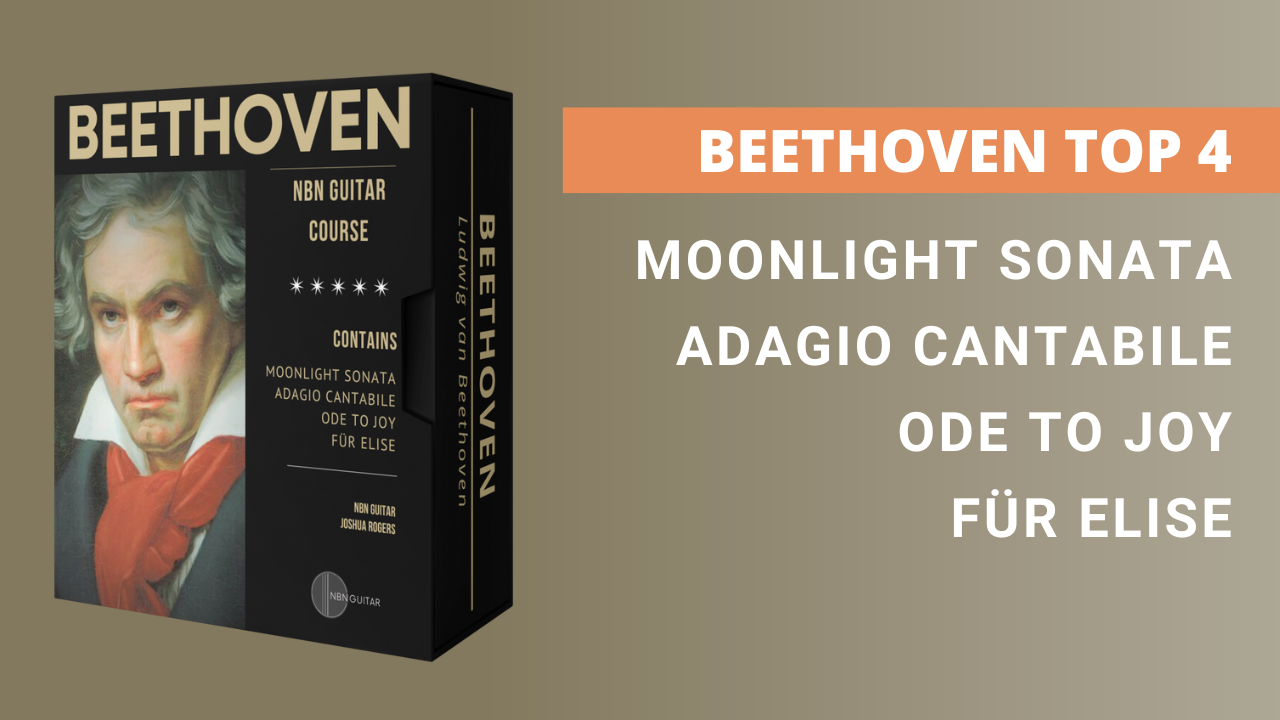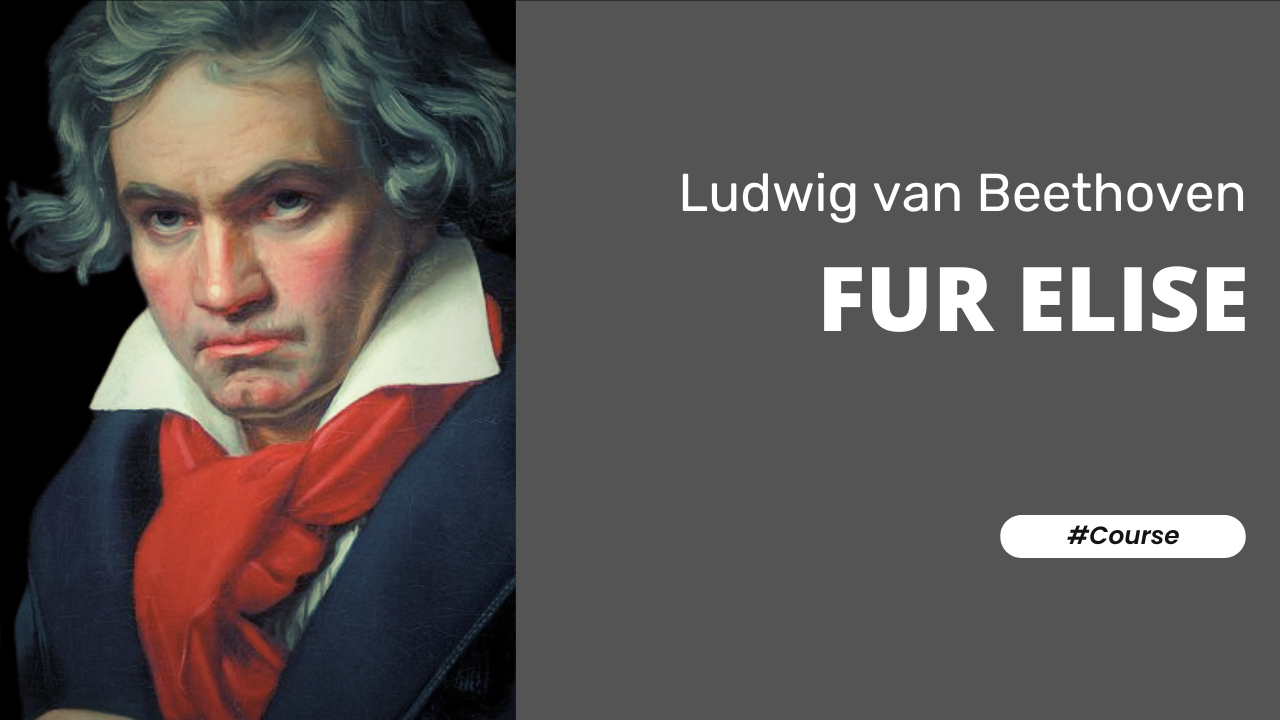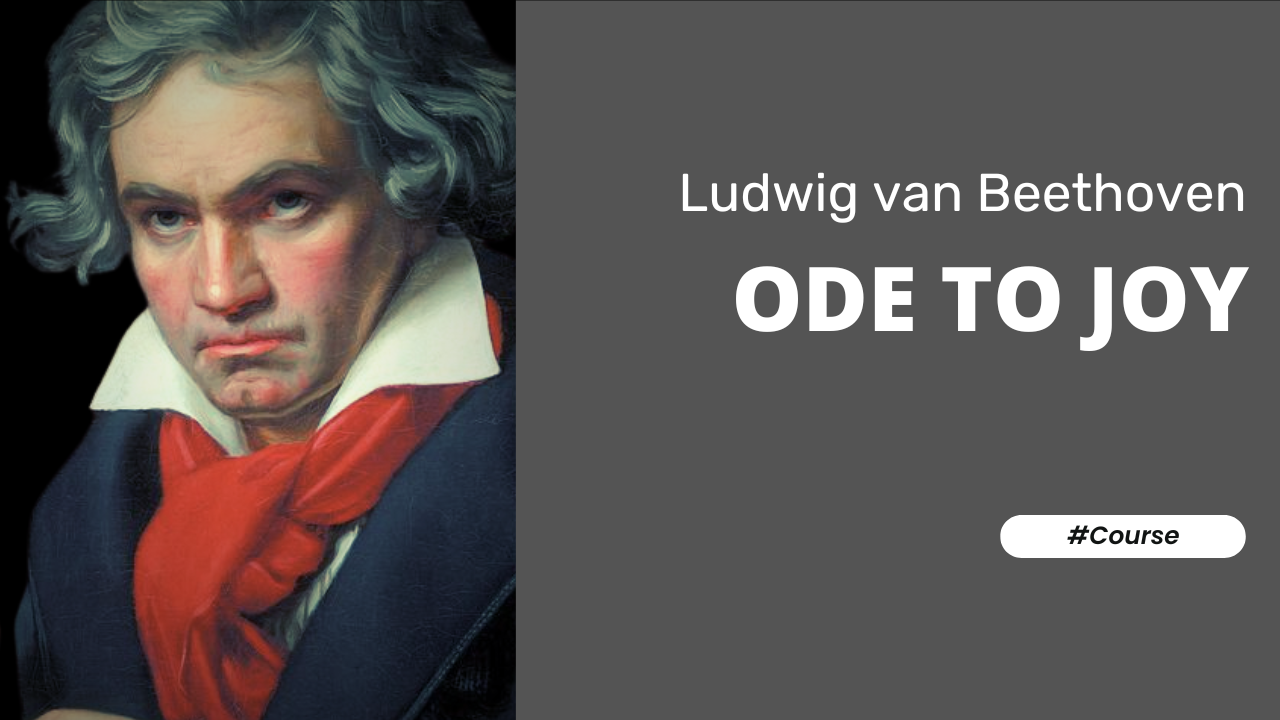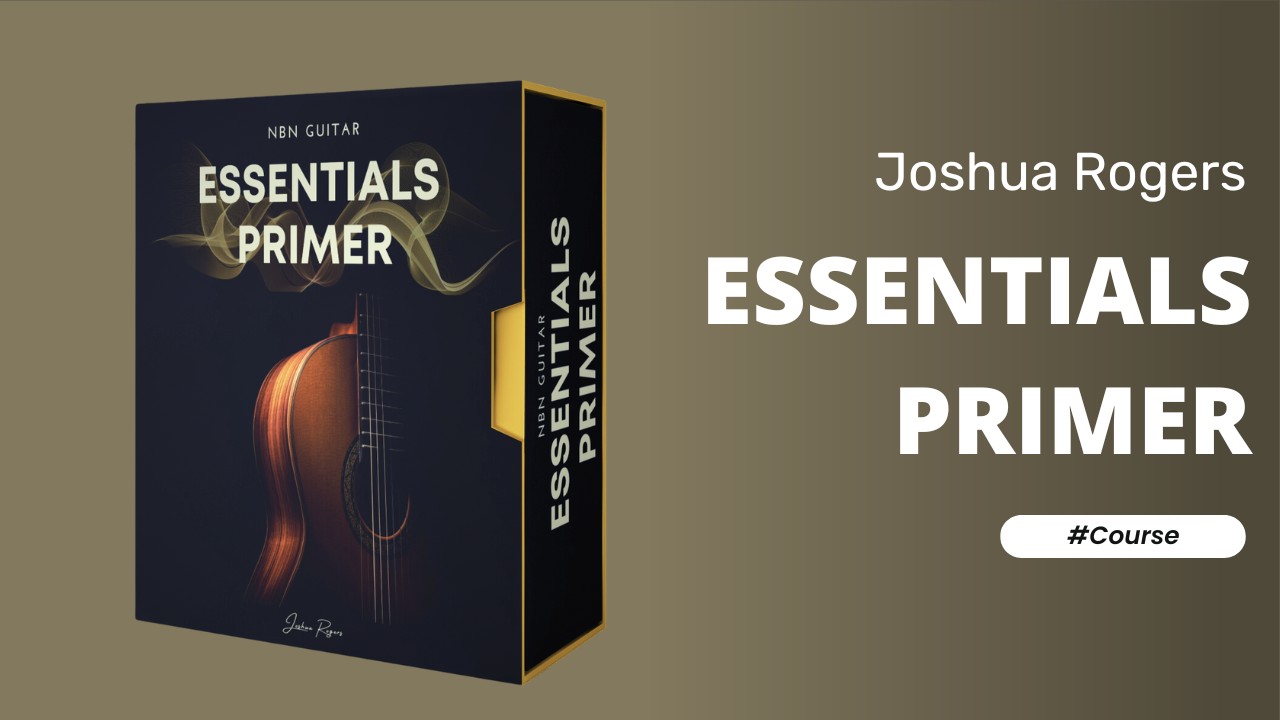Moonlight Sonata by Ludwig Van Beethoven
Introduction to the Moonlight Sonata Guitar Course
Ludwig Van Beethoven’s “Piano Sonata No. 14 in C# minor Quasi una Fantasia” or “Moonlight Sonata” as it is more commonly known is one of the world’s most atmospheric and memorable pieces. Although it was originally composed for piano it also sits admirably on the classical guitar. The classical guitar transcription represented here is the 1st movement ‘Adagio Sostenuto’.
The original is written in the key of C# minor however on the guitar it has been transposed to A minor for easier fingering. It is possible to play it in keys that are closer to the original by using a capo.
Below are a few things to bear in mind as your learn to play Moonlight Sonata:
-
Place a capo at the 4th fret to play in the original key
-
Think of the piece in terms of chords rather than individual notes
-
Keep dynamic variations between piano & mezzo forte
This piece isn’t overly difficult on the guitar but particular attention should be paid to phrasing particularly in certain areas where the phrases last over several bars and almost sound syncopated because the phrases are so long. It is easy to ‘lose your way’ in these sections. I do suggest listening to the great piano masters playing this piece for guidance. Often guitarists for some reason have a completely different way of interpreting pieces yet I believe we should follow pianists as closely as possible because the piece was originally written for that instrument.
Musical Style
Ludwig van Beethoven’s musical style is a bridge between the Classical and Romantic periods, characterized by its dramatic contrasts, innovative structures, and profound expressiveness. His compositions often feature bold harmonic progressions, dynamic shifts, and intricate thematic development. Beethoven expanded the traditional forms of his time, infusing them with emotional depth and individuality. His ability to convey a wide range of emotions, from serene and contemplative to turbulent and heroic, has made his music timeless and influential.
Notable Pieces
Five notable pieces by Ludwig van Beethoven:
• Symphony No. 5 in C minor, Op. 67
• Symphony No. 9 in D minor, Op. 125 (“Choral”)
• Piano Concerto No. 5 in E-flat major, Op. 73 (“Emperor”)
• Piano Sonata No. 8 in C minor, Op. 13 “Pathétique” (available as a course here on NBN Guitar)
• Violin Concerto in D major, Op. 61
Let your fingers fly!
Josh
Course Instructor
Moonlight Sonata Course
Learn to play Moonlight Sonata
About this Course
Introduction to the Moonlight Sonata Guitar Course
Ludwig Van Beethoven’s “Piano Sonata No. 14 in C# minor Quasi una Fantasia” or “Moonlight Sonata” as it is more commonly known is one of the world’s most atmospheric and memorable pieces. Although it was originally composed for piano it also sits admirably on the classical guitar. The classical guitar transcription represented here is the 1st movement ‘Adagio Sostenuto’.
The original is written in the key of C# minor however on the guitar it has been transposed to A minor for easier fingering. It is possible to play it in keys that are closer to the original by using a capo.
Below are a few things to bear in mind as your learn to play Moonlight Sonata:
-
Place a capo at the 4th fret to play in the original key
-
Think of the piece in terms of chords rather than individual notes
-
Keep dynamic variations between piano & mezzo forte
This piece isn’t overly difficult on the guitar but particular attention should be paid to phrasing particularly in certain areas where the phrases last over several bars and almost sound syncopated because the phrases are so long. It is easy to ‘lose your way’ in these sections. I do suggest listening to the great piano masters playing this piece for guidance. Often guitarists for some reason have a completely different way of interpreting pieces yet I believe we should follow pianists as closely as possible because the piece was originally written for that instrument.
Musical Style
Ludwig van Beethoven’s musical style is a bridge between the Classical and Romantic periods, characterized by its dramatic contrasts, innovative structures, and profound expressiveness. His compositions often feature bold harmonic progressions, dynamic shifts, and intricate thematic development. Beethoven expanded the traditional forms of his time, infusing them with emotional depth and individuality. His ability to convey a wide range of emotions, from serene and contemplative to turbulent and heroic, has made his music timeless and influential.
Notable Pieces
Five notable pieces by Ludwig van Beethoven:
• Symphony No. 5 in C minor, Op. 67
• Symphony No. 9 in D minor, Op. 125 (“Choral”)
• Piano Concerto No. 5 in E-flat major, Op. 73 (“Emperor”)
• Piano Sonata No. 8 in C minor, Op. 13 “Pathétique” (available as a course here on NBN Guitar)
• Violin Concerto in D major, Op. 61
Let your fingers fly!
Josh
Course Instructor
Moonlight Sonata Course
Learn to play Moonlight Sonata




